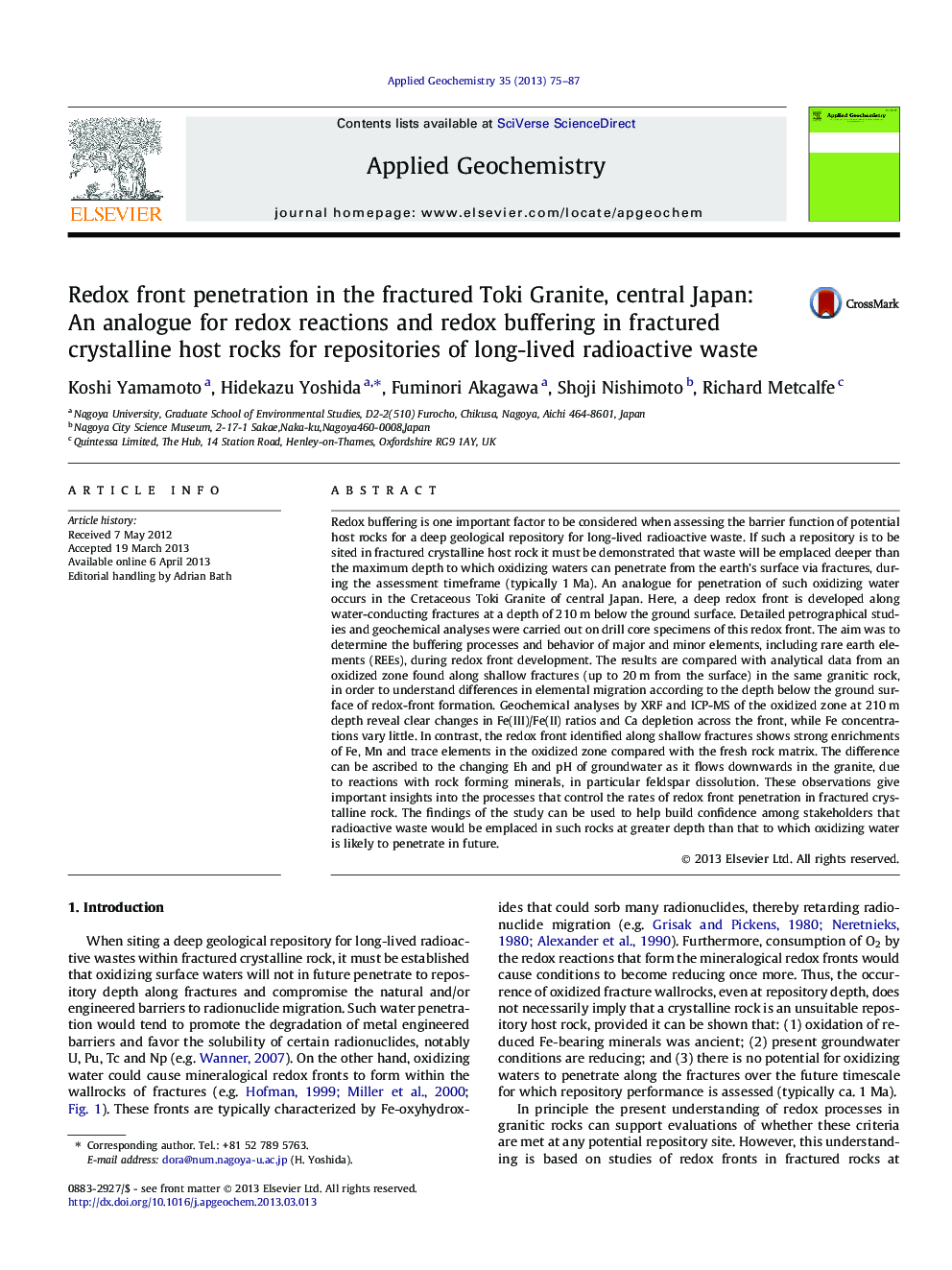| Article ID | Journal | Published Year | Pages | File Type |
|---|---|---|---|---|
| 6335337 | Applied Geochemistry | 2013 | 13 Pages |
Abstract
Redox buffering is one important factor to be considered when assessing the barrier function of potential host rocks for a deep geological repository for long-lived radioactive waste. If such a repository is to be sited in fractured crystalline host rock it must be demonstrated that waste will be emplaced deeper than the maximum depth to which oxidizing waters can penetrate from the earth's surface via fractures, during the assessment timeframe (typically 1Â Ma). An analogue for penetration of such oxidizing water occurs in the Cretaceous Toki Granite of central Japan. Here, a deep redox front is developed along water-conducting fractures at a depth of 210Â m below the ground surface. Detailed petrographical studies and geochemical analyses were carried out on drill core specimens of this redox front. The aim was to determine the buffering processes and behavior of major and minor elements, including rare earth elements (REEs), during redox front development. The results are compared with analytical data from an oxidized zone found along shallow fractures (up to 20Â m from the surface) in the same granitic rock, in order to understand differences in elemental migration according to the depth below the ground surface of redox-front formation. Geochemical analyses by XRF and ICP-MS of the oxidized zone at 210Â m depth reveal clear changes in Fe(III)/Fe(II) ratios and Ca depletion across the front, while Fe concentrations vary little. In contrast, the redox front identified along shallow fractures shows strong enrichments of Fe, Mn and trace elements in the oxidized zone compared with the fresh rock matrix. The difference can be ascribed to the changing Eh and pH of groundwater as it flows downwards in the granite, due to reactions with rock forming minerals, in particular feldspar dissolution. These observations give important insights into the processes that control the rates of redox front penetration in fractured crystalline rock. The findings of the study can be used to help build confidence among stakeholders that radioactive waste would be emplaced in such rocks at greater depth than that to which oxidizing water is likely to penetrate in future.
Related Topics
Physical Sciences and Engineering
Earth and Planetary Sciences
Geochemistry and Petrology
Authors
Koshi Yamamoto, Hidekazu Yoshida, Fuminori Akagawa, Shoji Nishimoto, Richard Metcalfe,
